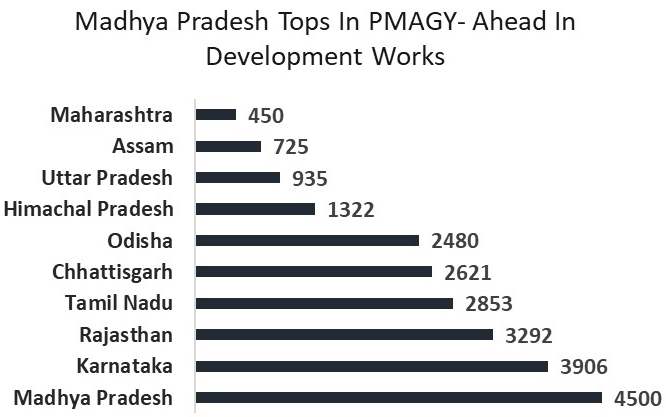Madhya Pradesh is at the forefront of implementing the Pardhan Mantri Aadarsh Gram Yojana – PMAGY. A total of 1074 villages have been included whereover 50% population belong to the Scheduled Caste. The Ministry of Social Justice and Empowerment has allocated Rs. 20 lakh for each village. A sum of Rs. 210.90 crore has been received for development of these villages. As many as 4500 development works have been completed and 3000 are going on.

The objective of PMAGY is to ensure integrated development in scheduled caste populated villages. Around 50 development indicators related to social security, nutrition, roads, housing, electricity supply, cleanliness, fuel availability, agriculture, financial inclusion, digital facilities, lifestyle, and skill development have been prepared to review the development processes in these villages.
A detailed Village Development Plan has been prepared by combining relevant schemes of the Centre and State Government. Each village has its own development roadmap. The scheme was launched in 2014-15. Initially 327 villages were covered. Last year, in 2022, the population parameter was revised according to which villages with a minimum population of 500 having at least 40% of the Scheduled Caste population were included. Inclusion of 619 such villages is under consideration.
Convergence Committees
District level Convergence Committees have been constituted under the chairmanship of the District Collector. At the village level, Convergence Committees are formed under the chairmanship of the Sarpanch for the implementation of the PMAGY. These committees discuss various aspects like planning, objectives, fund allocation, convergence of various departments, regular planning, and budget allocation for the development of their respective villages. The District Collector is responsible for performance of the scheme at the district level while the Gram Sabha is responsible at the gram panchayat.
How It Works?
The PMAGY performs two layers of activities. Firstly, the preparation of a village development plan by integrating the plans of various development departments for holistic infrastructural development. If difficulties obstruct in securing funds, gap-filling fund could be utilized.
The second layer involves ensuring the villages benefits from departmental schemes. This includes enrolling eligible children in schools, ensuring vaccination of children, opening bank accounts for all eligible individuals for elderly and differently-abled pensions, Aadhaar cards. Additional tasks like ensuring clean drinking water, sanitation facilities, facilitating construction of Anganwadi toilets, Anganwadi buildings, all-weather roads, arranging solar and street lighting, etc., are being carried out.



